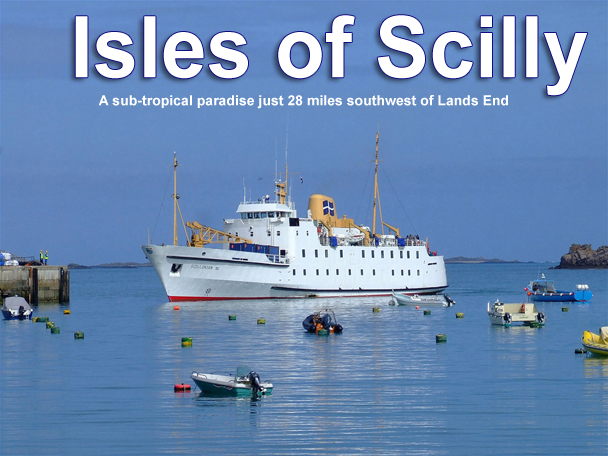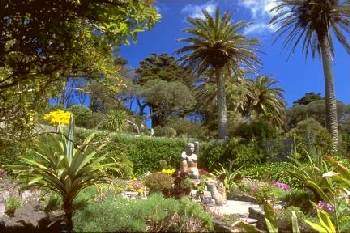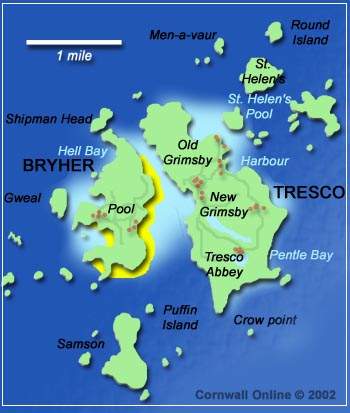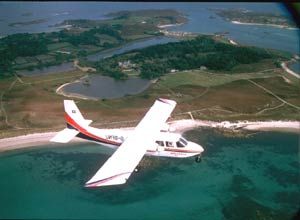Tresco Tresco,the second largest island in the group, features an amazing variety of scenery. Wild rugged granite outcrops and heathland to the north, with sub-tropical sandy beaches and the Abbey Gardens in the South. History and Legend are deeply rooted in the islands culture. Many people believe that Tresco was the legendary 'Lyonesse' or 'land across the sea' - the final resting-place of King Arthur. People have lived on the island since the earliest times, gradually creating the present day landscape as they carved out a living for themselves in this remote and sometimes harsh environment. Tresco Abbey Gardens The Abbey Gardens are a home to over 20,000 exotic plants from 80 countries across the globe (Brazil, New Zealand Africa). The unique micro climate at the sheltered southern tip of Tresco, has formed a unique environment with many species of plants thriving here that would not survive on the Cornish mainland, just 30 miles away. Statues and figurines, symbolising the 'natural forces' accentuate the gardens overall beauty, whilst shipwrecked figureheads in the Valhalla Museum remind you of storms and the remoteness of these small islands amidst the large expanse of the Atlantic Ocean.
Augustus created the gardens by constructing a series of walled enclosures and terraces on the rocky southern slopes of the island. Tall windbreaks channelled the weather up and over the site, sheltering the gardens from the worst of the weather. By planting the hotter, drier terraces at the top with species imported from South African and Australian, and those at the bottom with species that prefer a more humid regime - plants from New Zealand and South America - he created a garden with a greater bio-diversity than can be found anywhere in the Southern Mediterranean. |
||||

 Tresco Abbey Gardens
Tresco Abbey Gardens 

 The
gardens were originally the private gardens of Augustus Smith. He began
to carve this beatiful setting from the bare moorland around the old
Priory following his appointment as Lord Proprietor of the Scillies
in 1834. Augustus broke with the tradition of absentee landlords, by
making Tresco his permanent home. During the subsequent years, he restructured
the failing farm industry and ringing new life into the economy through
his support of new ideas; such as the embryonic flower business. Augustus
Smith built schools on all the main islands, making education compulsory
some 30 years before the mainland adopted the practice.
The
gardens were originally the private gardens of Augustus Smith. He began
to carve this beatiful setting from the bare moorland around the old
Priory following his appointment as Lord Proprietor of the Scillies
in 1834. Augustus broke with the tradition of absentee landlords, by
making Tresco his permanent home. During the subsequent years, he restructured
the failing farm industry and ringing new life into the economy through
his support of new ideas; such as the embryonic flower business. Augustus
Smith built schools on all the main islands, making education compulsory
some 30 years before the mainland adopted the practice.